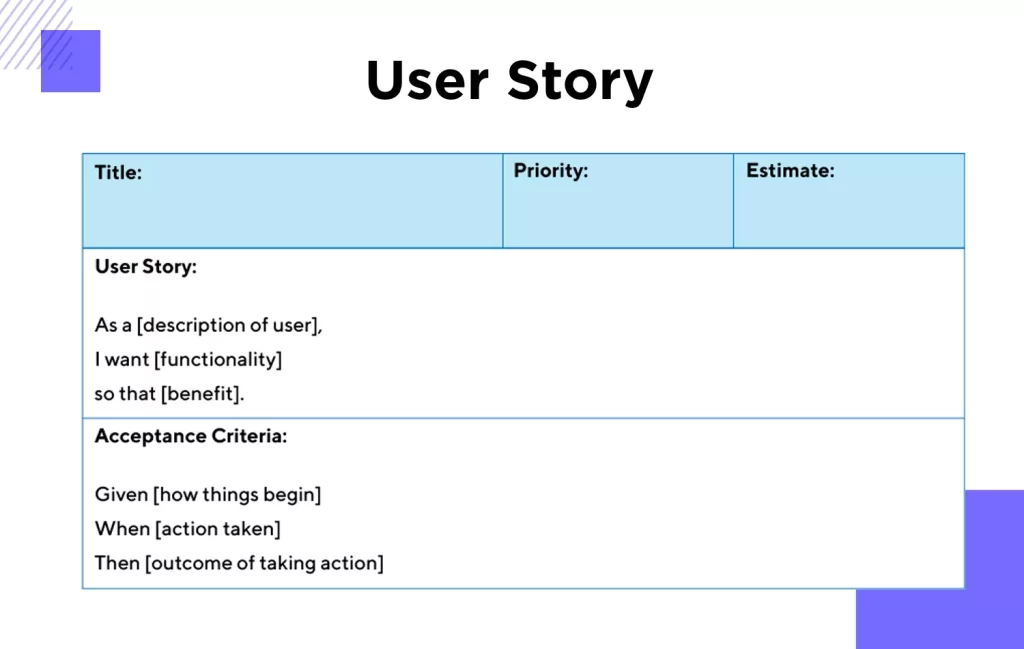Why Do You Need User Stories
- User stories are used to document the interactions between the user and the application. They are written from a user’s perspective.
- They are used in agile development to help developers understand what needs to be developed and how it should work.
- The goal of a user story is to express, in plain language, an understanding of how a feature will work for an end-user. The story provides enough detail for someone on the team (typically a developer) to create a design and build out the functionality without having to ask any questions.
- A user story is a short description of a feature that helps the team understand what they are building. In agile, the user story should be written from the perspective of the person who will use it and it should contain enough detail for engineers to implement it.

User Story Writing Formula
- User stories are a way to communicate requirements in an easy, concise manner. This is especially important for agile development where the customer and the developer work closely together.
- The user story formula consists of three parts: Who, What, and Why. The who part describes the person or entity that is using the system. The what part describes what they want to do. And the why part explains why they want to do it in detail.
- User stories are a way to communicate requirements in an easy, concise manner that can be understood by both developers and customers alike. They are particularly important for agile development because they give both parties a clear understanding of what needs to be done and why it needs to be done at that particular time.
Conclusion & Tips for Writing User Stories
Tips for writing user stories:
– Keep the wording simple and concise, in active voice
– Use bullet points or numbered lists to break up text
– Use ‘As a’ and ‘I want’ sentences to make it clear who is performing an action
